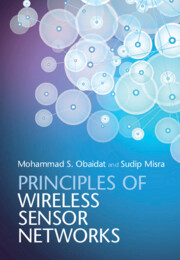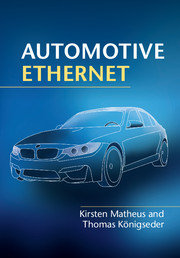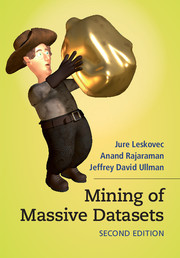Refine search
Actions for selected content:
48202 results in Computer Science
15 - The end of Moore’s law
-
- Book:
- The Computing Universe
- Published online:
- 05 December 2014
- Print publication:
- 08 December 2014, pp 298-317
-
- Chapter
- Export citation
13 - Artificial intelligence and neural networks
-
- Book:
- The Computing Universe
- Published online:
- 05 December 2014
- Print publication:
- 08 December 2014, pp 263-279
-
- Chapter
- Export citation
Name index
-
- Book:
- The Computing Universe
- Published online:
- 05 December 2014
- Print publication:
- 08 December 2014, pp 389-392
-
- Chapter
- Export citation
5 - Algorithmics
-
- Book:
- The Computing Universe
- Published online:
- 05 December 2014
- Print publication:
- 08 December 2014, pp 84-101
-
- Chapter
- Export citation
REC volume 27 issue 1 Cover and Back matter
-
- Article
-
- You have access
- Export citation
Appendix 2 - Computer science research and the information technology industry
-
- Book:
- The Computing Universe
- Published online:
- 05 December 2014
- Print publication:
- 08 December 2014, pp 362-364
-
- Chapter
- Export citation
17 - Computers and science fiction – an essay
-
- Book:
- The Computing Universe
- Published online:
- 05 December 2014
- Print publication:
- 08 December 2014, pp 333-358
-
- Chapter
- Export citation
Preface
-
- Book:
- The Computing Universe
- Published online:
- 05 December 2014
- Print publication:
- 08 December 2014, pp vii-x
-
- Chapter
- Export citation
How to read this book
-
- Book:
- The Computing Universe
- Published online:
- 05 December 2014
- Print publication:
- 08 December 2014, pp 365-366
-
- Chapter
- Export citation
9 - Computer games
-
- Book:
- The Computing Universe
- Published online:
- 05 December 2014
- Print publication:
- 08 December 2014, pp 174-191
-
- Chapter
- Export citation
10 - Licklider’s Intergalactic Computer Network
-
- Book:
- The Computing Universe
- Published online:
- 05 December 2014
- Print publication:
- 08 December 2014, pp 192-219
-
- Chapter
- Export citation

Principles of Wireless Sensor Networks
-
- Published online:
- 05 December 2014
- Print publication:
- 04 December 2014

Automotive Ethernet
-
- Published online:
- 05 December 2014
- Print publication:
- 27 November 2014

Near Field Communications Technology and Applications
-
- Published online:
- 05 December 2014
- Print publication:
- 18 December 2014

Mining of Massive Datasets
-
- Published online:
- 05 December 2014
- Print publication:
- 13 November 2014
Modules over relative monads for syntax and semantics
-
- Journal:
- Mathematical Structures in Computer Science / Volume 26 / Issue 1 / January 2016
- Published online by Cambridge University Press:
- 05 December 2014, pp. 3-37
-
- Article
- Export citation
Relating timed and register automata†
-
- Journal:
- Mathematical Structures in Computer Science / Volume 26 / Issue 6 / September 2016
- Published online by Cambridge University Press:
- 05 December 2014, pp. 993-1021
-
- Article
- Export citation
